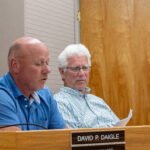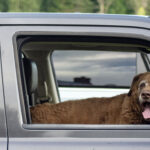Four steps to a healthy adult dog
PET BULLETIN
‘Mews and Yips’ from the Central Aroostook Humane Society
By Gail Wieder
Board Member
Are you one of those people that have or have had an overweight dog? I think we all have had that problem at some time or other — too many treats, too many table scraps. How can you help it with those big brown eyes looking at you saying: “I’m hungry”, even though you know you just fed them before you ate yourself. You still sneak that treat to them; it is hard to say “no.”
If this is the case then maybe you will find the information below helpful. Listed are “Four Steps to a Healthy Adult Dog”. This and more information on this subject can be found at HillsVet.com.
How to make sure your dog attains his ideal weight and maintains a healthy weight for life:
• Track your dog’s weight. Losing weight can propel your dog toward better health, but only if the weight is lost in a healthy, controlled manner. To make sure your dog is losing weight at a normal pace, make sure to weigh your pet regularly; use a weight-tracking chart to track your dog’s progress, and assess your dog’s body condition score regularly. Most veterinarians’ offices have a scale available to use free of charge. If you have a small dog you can use your own scale holding your dog and subtracting your weight;
• Include healthy activity. Part of your dog’s weight management program should include a good deal of physical activity. Whether it’s a game of fetch or a walk in the park, make sure your dog is getting the physical activity he needs to get and stay healthy;
• Visit your veterinarian often. Make frequent visits to your veterinarian to ensure that your dog’s weight management program is going smoothly. Your veterinarian knows your dog’s ideal weight, how fast he should be losing weight and which foods are best for each stage of the weight management plan; and
• Maintain an ideal weight for life. Your dog’s weight management plan shouldn’t be temporary. Once your dog has attained his ideal weight, switch to a simple weight maintenance plan that consists of regular exercise and proper nutrition.
Your dog may gain or regain weight more easily than others. Breed, age, food selection, state of health and a variety of other factors can determine how quickly a dog gains weight and what kind of nutrition he needs to help control it. If you think your dog might be in need of a weight management program, ask your veterinarian for advice.
Come visit the Central Aroostook Humane Society and check out the wonderful fur babies we have for adoption. Our hours are Tuesday through Saturday 10 a.m. to 4 p.m., closed for lunch noon to 12:30 p.m. Check us out on Facebook and petfinders.com. Please be responsible, spay and neuter your pets.







